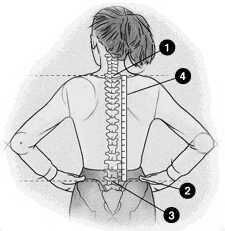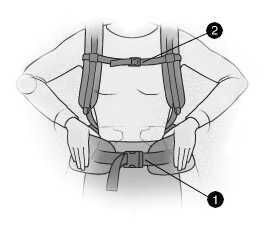Nov 26, 2024
Backpack Fit
Finding the Right Backpack Fit
Taking Measurements

- It is a good idea to have a friend help you take these measurements comfortably and accurately.
- Place a piece of masking tape on your 7th vertebra, the bony protrusion at the base of your neck between your shoulders.
- Now find the point at the small of your back that is exactly level with the top, or shelf, of your hipbones. Slide your hands (fingers forward, thumbs behind you) down your sides until they rest directly on top of your hips. Your thumbs will point toward your spine. Have a friend ensure that your thumbs are on the same horizontal plane across your spine.
- Place another piece of tape on the spine at the point where the imaginary horizontal plane would cross.
- Using a soft measuring tape, place one end on the 7th vertebra (1) and follow the contour of your spine to the tape mark on your lower back (3).
- Write down the measurement in inches (in the United States) or centimeters.

Fit Tips

- Hip belts: Women with straight or narrow hips will have little trouble with standard hip belts. Individuals (men or women) with more curve to their hips will need a woman's style waist belt.
- Note that hip belts should cup your hips (1) and be sized so when cinched tightly, there is still a bit of webbing left and the pads do not touch.
- Shoulder straps: They should anchor to the backpack just below the 7th vertebra and near the crest of your shoulders. They should wrap comfortably, but securely, around the shoulders and the strap padding should end no closer than 5 inches (12.5cm) below your armpit.
- Sternum straps: These are meant to keep your shoulder straps from sliding off your shoulders under a load (2). They are not meant to support weight and should never be pulled so tightly that they restrict breathing.
- Load-Lifters: These should form a 45-degree angle from the frame or top of the pack to a point at or above your clavicle.